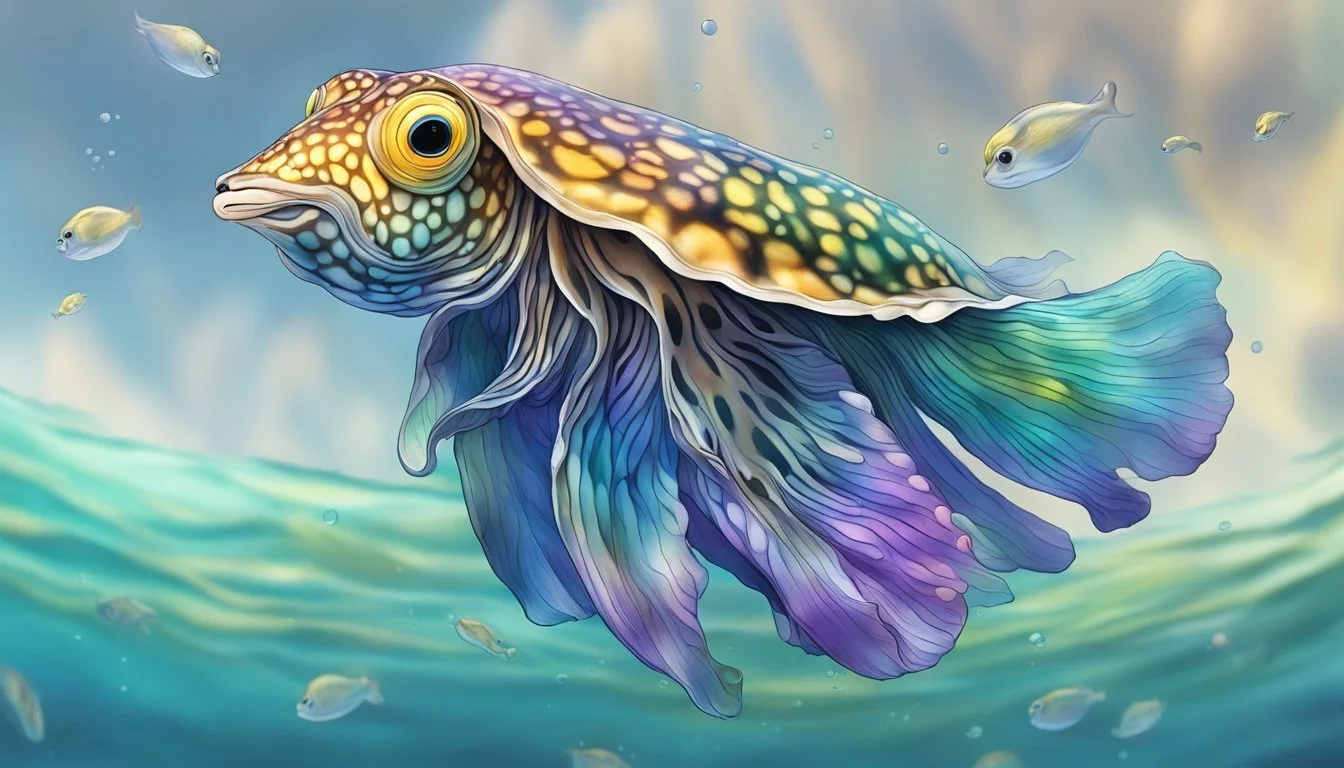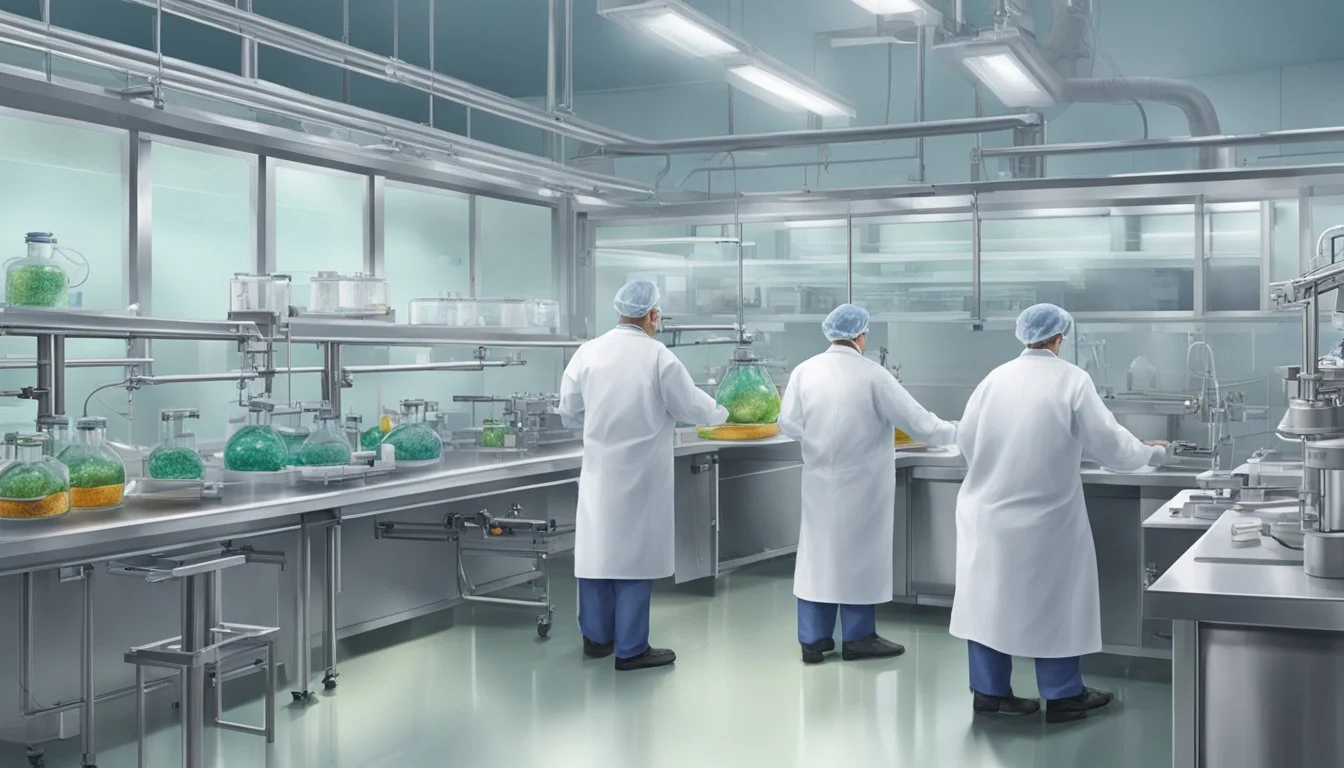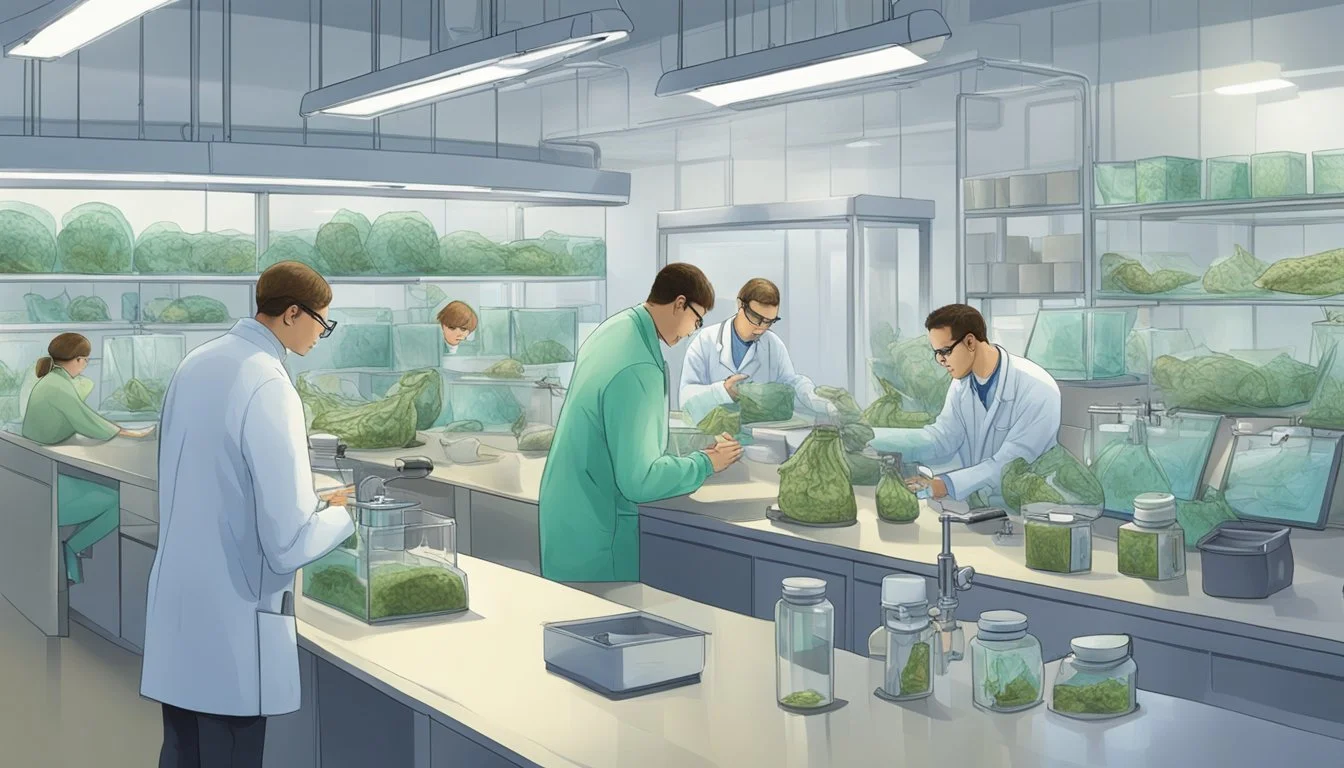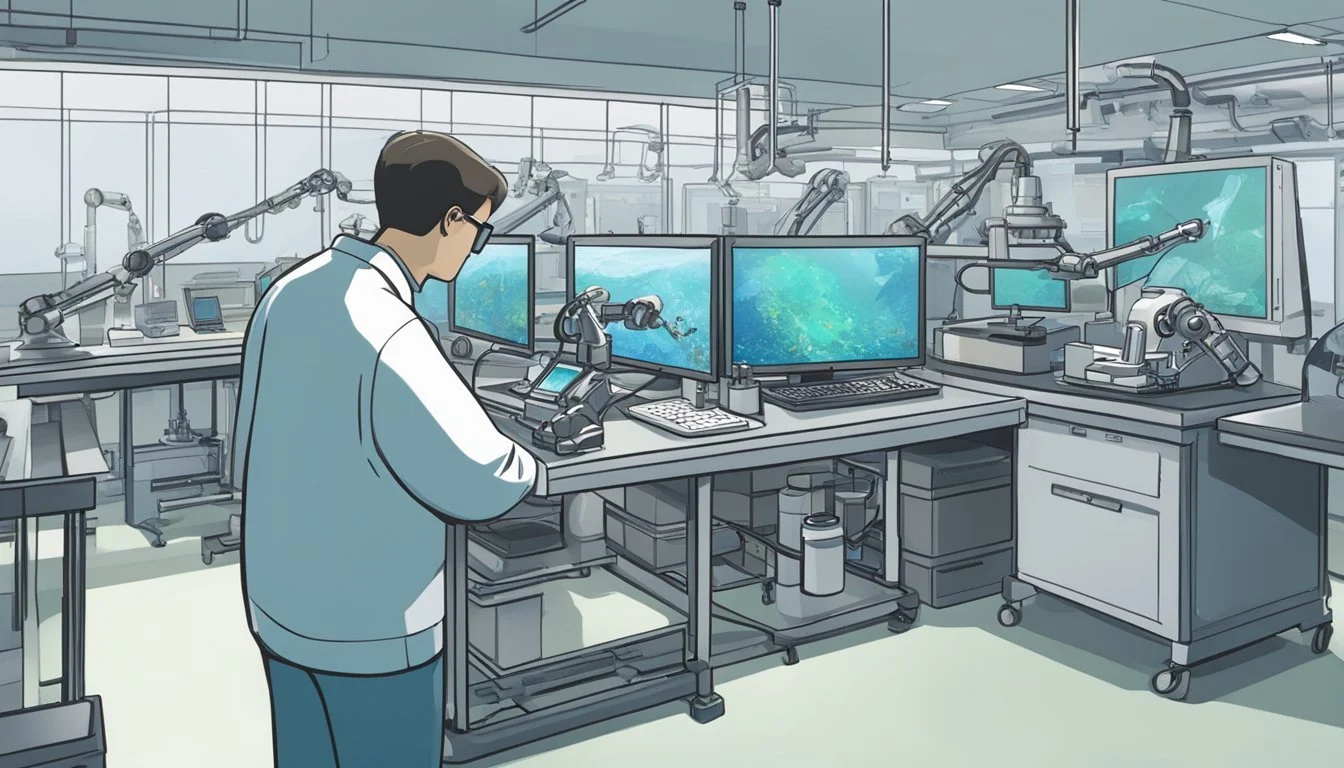Cuttlefish Substitutes
Best Alternatives for Seafood Dishes
Finding the perfect cuttlefish substitute can elevate your culinary creations while addressing sustainability concerns. Whether aiming for a similar taste and texture in your dishes or venturing into plant-based options, several alternatives can fit the bill. Seitan, with its chewy consistency, effectively mimics the texture of cuttlefish, making it a versatile replacement in various recipe
Tofu and konjac also offer promising substitutes. Tofu, a soy-based product, can be cut and flavored to emulate cuttlefish rings or pieces, while konjac, derived from the root of the konjac plant, presents a gelatinous texture suitable for replicating many cuttlefish dishes. These substitutes not only cater to dietary preferences but also support sustainable eating practices.
For those intrigued by innovative angles, the field of bone tissue engineering explores the use of cuttlefish bone as biomaterial. This demonstrates the multifaceted applications of cuttlefish beyond the kitchen, emphasizing its role in advancing scientific research. Understanding these substitutes and their broader applications can enhance both culinary adventures and ethical eating habits.
Understanding Cuttlefish and Their Role in Biomaterials
Cuttlefish have become a valuable resource in the development of biomaterials, particularly cuttlefish bone, which plays a crucial role in tissue engineering due to its unique properties and composition. The following sections elaborate on the biology of cuttlefish, the composition and properties of their bones, and their applications in tissue engineering.
The Biology of Cuttlefish
Cuttlefish belong to the class Cephalopoda, known for their intelligence and complex behaviors. These marine animals are specially adapted for floating and maneuvering in water via a unique internal shell called the cuttlebone. Unlike other marine creatures, cuttlefish use this buoyancy mechanism to inhabit various ocean depths. Their cuttlebone plays a crucial role in not only providing buoyancy but also serving as an essential structure for developing biomaterials.
Cuttlefish Bone: Composition and Properties
Cuttlefish bones are composed primarily of calcium carbonate in the form of aragonite. The bone features a highly porous structure with a lamellar matrix supported by pillars, providing both strength and lightweight properties. This quasi-periodic microstructure allows for high permeability, making it a suitable scaffold for biological applications. Additionally, cuttlefish bone contains naturally occurring hydroxyapatite, closely mimicking human bone tissue, thus enhancing its bioactivity and compatibility in in vitro and in vivo applications.
Cuttlefish Bone in Tissue Engineering
In tissue engineering, cuttlefish bone is highly regarded for its role in developing bone substitutes. Its osteoconductive properties provide a scaffold that supports cell attachment, proliferation, and differentiation. Researchers have successfully used cuttlefish bone-derived hydroxyapatite in constructing bone implants and other medical devices. Furthermore, the material exhibits excellent mechanical strength and bioactivity, making it ideal for repairing bone tissue. The bone's calcium phosphate content also contributes to its structural stability and effectiveness in promoting tissue regeneration and healing.
Alternative Biomaterials to Cuttlefish Bone
Various alternative biomaterials to cuttlefish bone offer unique properties that make them suitable for medical applications, especially in bone graft substitutes. These materials include hydroxyapatite-based substitutes, synthetic porous scaffolds, natural coral-derived substitutes, and metal ion alternatives. Here's a detailed look into each of these options.
Hydroxyapatite-Based Substitutes
Hydroxyapatite (HAp) is frequently used due to its excellent osteoconductive properties and compatibility with bone tissue. Synthesized through processes like hydrothermal transformation, HAp can be derived from various natural sources as well as synthesized chemically.
This compound facilitates bone growth and integration, making it ideal for grafts. Research has shown that HAp derived from sources like bovine bone and eggshells can mimic the porous structure of natural bone. Scanning electron microscopy has been instrumental in analyzing the microstructure of these substitutes, ensuring their efficacy and similarity to human bone.
Synthetic Porous Scaffolds
Synthetic porous scaffolds are engineered to mimic the natural bone structure, offering customizable properties. These scaffolds can be made from materials such as bioceramics, polymers, or composites.
Advantages:
They provide a high degree of control over porosity, mechanical strength, and degradation rates.
Tailored to specific medical needs.
Applications:
Used in bone tissue engineering and regenerative medicine.
Support cell attachment and proliferation, leading to effective integration into the host bone.
Through techniques like electrospinning and 3D printing, these scaffolds are designed to match the mechanical and biological environment of bone.
Natural Coral-Derived Substitutes
Coral-based materials are another viable option due to their natural porous structure, similar to that of human bone. Hydrothermal transformation processes convert coral calcium carbonate into hydroxyapatite, enhancing its compatibility with bone tissue.
Benefits:
Coral-derived substitutes have a high success rate in bone grafts.
The natural porosity facilitates vascularization and integration.
Application: Orthopedic and dental surgeries utilize these substitutes to rebuild and repair bone defects. The natural structure and composition make coral-derived grafts an appealing alternative.
Metal Ion Alternatives
Metal ions such as magnesium and zinc are used to improve the properties of bone graft materials. These ions can be incorporated into hydroxyapatite or other scaffold materials to enhance biocompatibility and mechanical strength.
Key Points:
Magnesium: Essential for bone health; improves osteogenesis and biodegradability of scaffolds.
Zinc: Increases bone formation and aids in cellular functions related to healing.
These metal ion additives provide a balance between strength and bioactivity, making them suitable for various bone repair applications. Such enhancements ensure the substitute materials not only perform well mechanically but also promote fast and effective healing.
Culinary Substitutes for Cuttlefish
Cuttlefish can be substituted with a variety of other seafood depending on the dish and desired outcome. Here's a look at some suitable substitutes and their specific applications.
Seafood Alternatives
Squid: This is the most similar substitute for cuttlefish in terms of texture and flavor. Often available in many markets, squid works well in stews, soups, and grilled dishes.
Octopus: Another option, octopus offers a slightly firmer texture and mild flavor. It's best in salads, ceviche, or stewed recipes.
Shrimp: For a sweeter flavor and tender texture, shrimp can be used. It’s versatile and fits well in pasta, risottos, and as a grilled option.
Salmon: Though texturally different, salmon offers a rich, fatty flavor that can complement many dishes where cuttlefish might be used, particularly in grilled or baked preparations.
Technological Considerations in Creating Substitutes
The development of cuttlefish substitutes involves advanced techniques in tissue engineering and biomaterials to mimic the texture and nutritional profile of real cuttlefish. This section will explore the technological advancements essential for successful substitute creation.
Advancements in Tissue Engineering
Tissue engineering plays a critical role in the creation of cuttlefish substitutes. Biomaterials are carefully selected to replicate the texture and sensory properties of cuttlefish. These materials provide a scaffold for cell proliferation and differentiation, ensuring a realistic product.
Scanning Electron Microscopy (SEM) is utilized to analyze the microstructure of the biomaterials, guaranteeing they resemble natural cuttlefish tissue. SEM provides detailed images that help in refining the texture.
Hydrothermal transformation techniques are also employed to enhance the mechanical properties of the substitutes. This process not only strengthens the structure but also modifies the texture, making it more comparable to that of real cuttlefish.
These technological advancements are crucial in developing substitutes that not only taste and feel like cuttlefish but also meet nutritional and sensory expectations.
Evaluating the Effectiveness of Substitutes
Key considerations for the effectiveness of substitutes include their performance in laboratory settings and their real-world applications in clinical environments.
In Vitro Analysis
In vitro studies provide critical insights into the bioactivity, proliferation, and differentiation of cells when exposed to cuttlefish bone-derived hydroxyapatite (HAp) substitutes. These studies often use techniques such as scanning electron microscopy (SEM) to evaluate the structure and porosity of the HAp granules.
By maintaining a high degree of porosity, these materials support cell viability and promote cellular interactions necessary for bone regeneration. Researchers assess the osteoconductive properties by examining cell attachment and proliferation rates. The effects on cell differentiation are measured to determine how well the substitutes induce the transformation of progenitor cells into mature bone cells.
Bioactivity tests, including simulated body fluid (SBF) immersion, are performed to assess the ability of the material to form bone-like apatite layers on its surface. This involves detailed evaluations to ensure the substitute is conducive to bone formation and healing processes.
In Vivo Applications and Studies
In vivo applications involve testing cuttlefish bone-derived substitutes in animal models to evaluate their real-world effectiveness as bone grafts. These studies focus on parameters such as biocompatibility, osteoconductivity, and the material's integration with bone tissues.
For instance, hydrothermal-transformed aragonite from cuttlebone (CB) to cuttlebone hydroxyapatite (CBHA) is implanted in live subjects to monitor its degradation and replacement by natural bone over time. The rate of bone healing, integration with existing bone structures, and any immune responses are closely observed.
In vivo evaluations also involve histological examinations to observe the quality of newly formed bone. The proliferation of osteoblasts and the differentiation of these cells into mature bone cells are critical metrics. These aspects help establish the substitute's efficacy in real-world scenarios and its potential for clinical use.
Ethical and Sustainability Concerns
The consumption and sourcing of cuttlefish substitutes raise several ethical and sustainability issues.
First, overfishing poses a significant problem, impacting marine biodiversity and the balance of ocean ecosystems. As demand for cuttlefish and similar seafood increases, sustainable fishing practices are crucial.
Additionally, the environmental footprint of seafood supply chains can be substantial. Complex and often opaque supply chains contribute to inefficiencies and resource wastage, complicating efforts to achieve traceability and sustainability.
Table of Common Issues:
Issue Impact Overfishing Depletes marine populations Supply Chain Complexity Traceability challenges Bycatch Unintended capture of non-target species
Aquaculture offers a potential solution. Farmed fish products can serve as viable alternatives, reducing pressure on wild populations. Ethical guidelines and regulatory frameworks in aquaculture are essential to ensure humane treatment of farmed species and minimize environmental impacts.
Key Considerations:
Use of biomaterials for sustainable packaging.
Adoption of certified sustainable practices in seafood farming.
Emphasis on transparency in supply chains.
Consumer awareness can drive change, encouraging responsible seafood choices. Labels indicating sustainable sources can help buyers make informed decisions, fostering a market demand for ethical and sustainable products.
Recognizing these concerns and addressing them through improved practices and consumer education is vital to achieving a more sustainable and ethical seafood industry.
Future Perspectives in Cuttlefish Substitute Research
Cuttlefish substitutes could revolutionize various scientific fields. Biomaterials derived from cuttlefish are becoming increasingly promising. Researchers are exploring the unique properties of cuttlefish ink and cuttlebone for developing sustainable materials.
In the realm of bone tissue engineering, cuttlefish-derived materials offer exciting possibilities. Studies are examining how these materials can be used to support bone regeneration and repair.
Tissue engineering may also benefit from cuttlefish substitutes. The adaptable structure of the cuttlebone makes it a candidate for scaffolding in tissue regeneration projects.
Future research will likely extend to mimicking the cuttlefish's ability to change color. This could have applications in dynamic biomaterials that respond to environmental changes.
Researchers are working on eco-friendly extraction methods. The goal is to maximize the potential benefits of cuttlefish materials without harming marine ecosystems.
Table: Key Research Areas in Cuttlefish Substitute Development
Research Area Potential Applications Biomaterial Development Sustainable materials, medical devices Bone Tissue Engineering Bone repair, regeneration, orthopedic implants Tissue Engineering Scaffolding, tissue regeneration Color Change Mimicry Dynamic biomaterials, sensors
The potential of cuttlefish substitutes in diverse applications marks a significant step forward. This innovative field is set to make substantial contributions to scientific and medical advancements.
Investments in future research and development can drive the commercialization of these substitutes, leading to practical and scalable solutions.
Contributions and Discoveries
Research on cuttlefish substitutes has grown substantially over the years. Various authors have explored the topic, highlighting important findings and contributions. One article emphasized that cuttlefish bone, while commonly used for bird calcium supplements, is often not the most efficient source. This finding has led to the search for more absorbable alternatives like calcium carbonate.
Another area of discovery lies in the realm of cuttlefish hunting tactics. Studies revealed that cuttlefish use their unique combination of arms and tentacles to hunt, setting them apart from their cephalopod relatives. These insights are crucial for understanding their survival mechanisms and potential applications in biomimetics.
The conservation of cuttlefish has also been a focal point for researchers. Due to their short lifespans and single breeding seasons, as discussed by several studies, there is an ongoing effort to develop methods to preserve their populations. Understanding their life cycles and reproductive habits is key to these conservation strategies.
Cuttlefish are also masters of disguise, using their chromatophores for dynamic color change. This has captivated scientists and led to numerous studies on their anatomy and capabilities. Such research is not only fascinating but also applicable in fields like material science and camouflage technology.
Furthermore, an interesting study referenced how cuttlefish performed on a test similar to the marshmallow test. This research provides insights into their cognitive abilities, prompting further studies on their decision-making processes and intelligence.
These contributions underscore a diverse and growing body of research that continues to uncover new and valuable information about cuttlefish and their substitutes.









